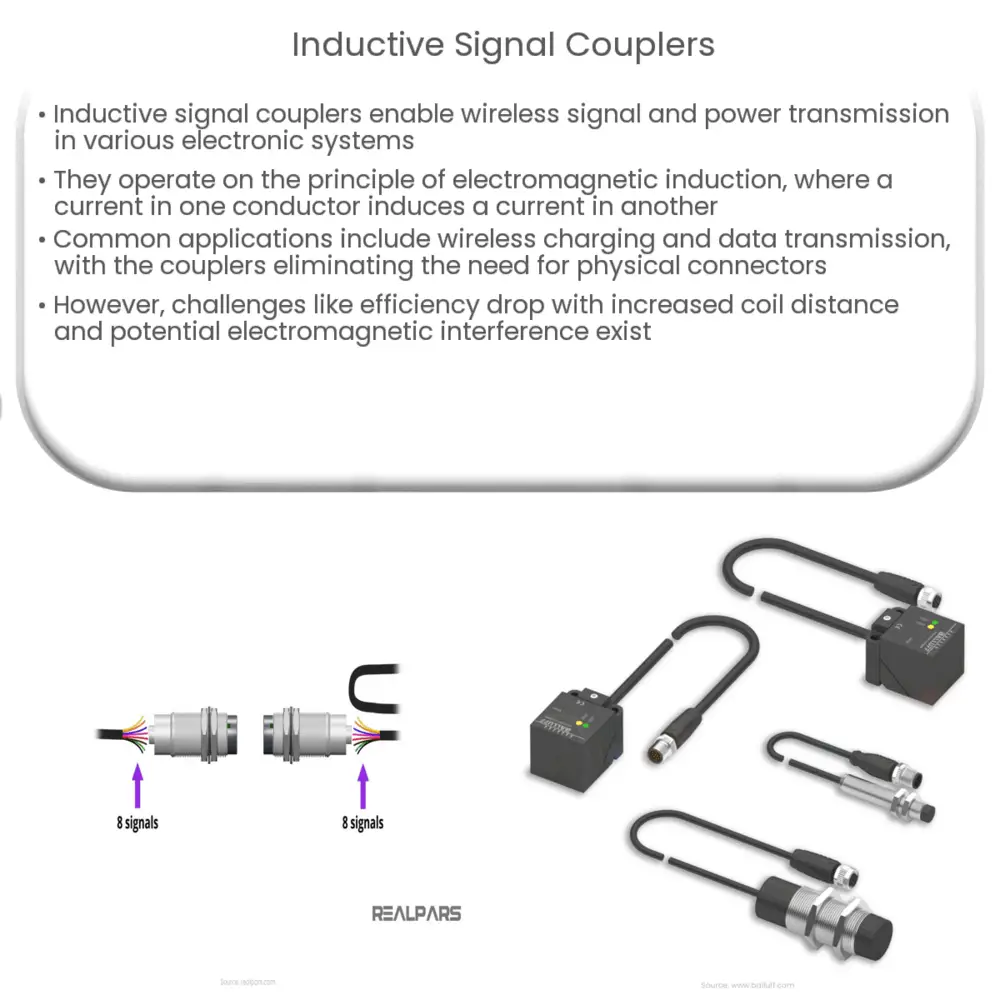Explore the science and applications of inductive signal couplers, from wireless charging to data transmission, in our comprehensive guide.

Understanding Inductive Signal Couplers
Inductive signal couplers represent an integral component in many electronic systems, most notably in data communication and power transmission contexts. These components function by enabling the transmission of signals between circuits without physical, direct connection – a fascinating process that happens in a non-contact way.
The Principle of Inductive Coupling
The underlying principle of inductive signal couplers is the physics concept of electromagnetic induction. It’s a process that involves the creation of an electromagnetic field around a conductor when current passes through it. This induced field can then create, or ‘induce,’ a current in a nearby second conductor.
- 1 Primary Coil: The first conductor, known as the primary coil, generates an electromagnetic field when a signal or current is applied.
- 2 Secondary Coil: The second conductor, the secondary coil, is strategically positioned within the influence of the primary coil’s electromagnetic field, hence enabling the transfer of signals or power.
Applications of Inductive Signal Couplers
Inductive signal couplers have numerous applications across various industries, thanks to their unique ability to transmit signals in a non-contact way.
- Wireless Charging: A familiar example of inductive coupling in everyday life is in wireless charging of devices like smartphones and electric toothbrushes. Here, the charging pad acts as the primary coil, and the device being charged is the secondary coil.
- Data Transmission: Inductive couplers are also widely used in data transmission systems, where the primary coil can be found in the transmitting device and the secondary coil in the receiving device.
- Medical Implants: In the healthcare sector, they are used for power transmission to medical implants, allowing charging and data communication without the need for physical wires that could compromise the sterility of the environment.
The use of inductive signal couplers in these applications has revolutionized how we interact with devices by eliminating the need for physical connectors and making wireless, efficient energy transmission a reality.
Types of Inductive Signal Couplers
Various types of inductive signal couplers exist, with the two primary categories being air-core and iron-core inductive couplers.
- 1 Air-core Couplers: These couplers don’t contain any magnetic material. They’re generally used for high-frequency applications where low power levels are required.
- 2 Iron-core Couplers: Iron-core couplers, on the other hand, have a magnetic material core. They are suitable for applications requiring higher power levels, but with a lower frequency range.
Design and Considerations
When designing an inductive signal coupler, several key considerations come into play. The most crucial are the size and type of the coils, the distance between them, and the frequency of operation. The coil size and type determine the coupler’s efficiency and operating frequency, while the distance between the coils impacts the strength of the magnetic field and therefore the power transfer.
Limitations and Challenges
Despite their numerous advantages, inductive signal couplers are not without their challenges. For instance, the efficiency of power transfer can drastically decrease with increased distance between the coils, which can limit the practical application of these couplers. Additionally, the system design must also account for potential electromagnetic interference that could affect other electronic components in the vicinity.
Conclusion
In conclusion, inductive signal couplers provide a critical bridge in many electronic systems by enabling wireless transmission of signals and power. Despite the challenges that designers must navigate, including power efficiency and electromagnetic interference, the principles of inductive coupling have provided the foundation for many revolutionary applications, such as wireless charging and data transfer. As technology continues to advance, it’s highly likely we’ll see even more innovative uses of inductive signal couplers in the years to come.

